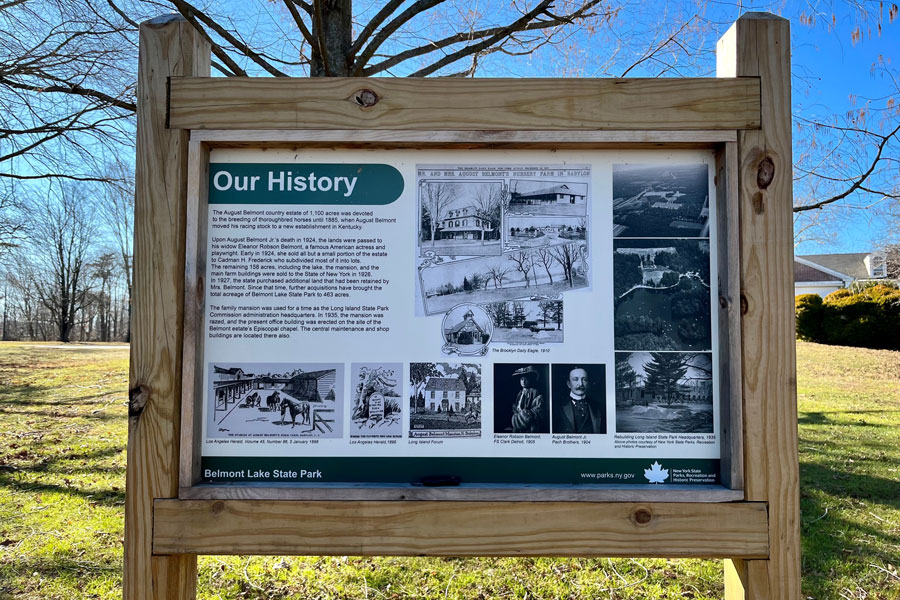Long Island State Park Commission (LISPC)

The Long Island State Park Commission (LISPC) was a state-level agency created in 1924 by the New York State Legislature to design, build, and manage parks and parkways on Long Island. Its headquarters was at Belmont Lake State Park in North Babylon, Long Island.
Though originally an independent agency, over time its functions were gradually absorbed: its parks came under the New York State Office of Parks, Recreation and Historic Preservation (NYS OPRHP), and its parkway responsibilities were transferred to the New York State Department of Transportation (NYSDOT).
Founding & Mission
- The idea was to respond to the rapid growth and development pressure in Long Island by deliberately creating a coordinated system of public open spaces (state parks) and connecting roads (parkways) to provide both recreation and access.
- The bill creating LISPC was drafted by Robert Moses, who became its first and long-time President.
- When it started, Long Island had only a single state park under state control (Fire Island State Park). By 1929, under the commission’s push, the system expanded to 14 parks totaling about 9,700 acres.
- Many of the initial land tracts acquired were formerly water-supply lands or privately held. For example, the City of Brooklyn had purchased parcels for water supply, which were repurposed under the commission.
Key Figures: Robert Moses & Governance
- Robert Moses was central. He served as President of the LISPC from its founding (1924) through 1953, and continued to greatly influence its direction beyond that.
- The commission was part of a broader structure: the State Council of Parks, which included other regional commissions, was established to coordinate statewide park policy. Upon its formation in April 1924, Moses was also elected to lead the State Council.
- Because Moses shaped the legislation, the commission had relatively strong authority over land acquisition, parkway planning, and design decisions-giving Moses substantial autonomy.
Major Contributions & Projects
Parks Created / Managed
LISPC was responsible for the creation, development, or administration of many of Long Island’s signature parks, including:
- Jones Beach State Park – arguably the flagship beach park, opened under Moses’s oversight (1929).
- Sunken Meadow State Park – conceived in 1926 by the commission; infrastructure and access were planned under Moses’ leadership.
- Belmont Lake State Park, Robert Moses State Park, Montauk Point State Park, Valley Stream State Park, and others.
- Bayard Cutting Arboretum – donated to the commission (through gifts and endowments) and opened under its stewardship.
Parkway / Roadway System
One of the distinctive features of the commission was that it did not just build parks – it also built the roads to connect them: parkways.
- LISPC oversaw design and construction of several Long Island parkways, including the Northern State Parkway, Bethpage State Parkway, Sagtikos State Parkway, Sunken Meadow State Parkway, and others.
- The Sagtikos State Parkway, for example, was proposed by LISPC to complete a gap in the Long Island parkway system. Land for it was donated and secured under LISPC auspices.
- The infrastructure approach promoted by LISPC under Moses emphasized scenic design, limited conflict with commercial traffic, and park‐oriented access.
Records & Archival Material
- The Robert Moses Collection includes extensive records from the LISPC era: meeting minutes, correspondence, engineering and architectural plans, promotional materials, photographs, and more.
- The New York State Archives and Long Island regional archives maintain these collections, often intermixed with related authorities (like Jones Beach State Parkway Authority and Bethpage Park Authority).
- LISPC also published annual reports, studies (e.g. “Improvement of Jones Inlet,” “Northern State Parkway and Sagtikos State Parkway”), and planning documents that are part of historical archives.
Decline, Transitions & Dissolution
- By around 1980, LISPC ceased functioning as a fully independent body. Its park operations were transferred to the NYS Office of Parks, Recreation & Historic Preservation, and the highway/parkway functions were placed under NYSDOT.
- The Long Island State Parkway Police, once its law enforcement arm, was disbanded in 1980. Patrol of parkways was shifted to the New York State Police, and park enforcement remained with State Park Police.
- Despite dissolution, the legacy and framework of LISPC continue via regional structures of NYS Parks in Long Island, and via the built parkway/park network it established.
Impact & Legacy
- LISPC was instrumental in transforming Long Island’s open space and public access landscape: parks that had once been inaccessible or disconnected by transit were connected via parkways and made accessible to the growing suburban population.
- The commission’s model of coupling park creation with transportation corridors has been influential in urban and infrastructure planning.
- Many of Long Island’s most visited parks and parkways trace their origin to decisions by LISPC under Moses.
- Its archival records are a treasure trove for historians of urban planning, public works, and regional development on Long Island.

